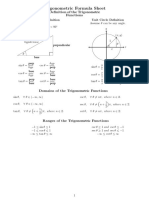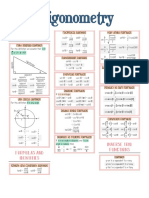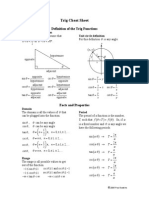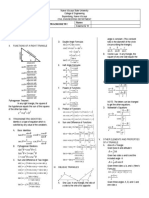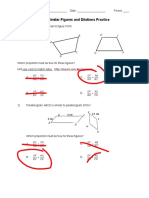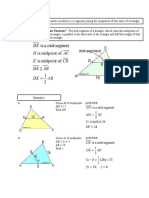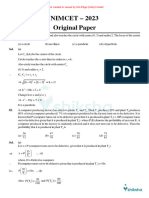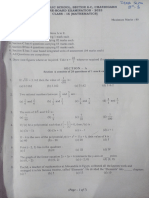0% found this document useful (0 votes)
38 views4 pagesTrigonometry Formulas
The document provides definitions and properties of trigonometric functions, including their relationships in right triangles and the unit circle. It details the domain, range, and periodicity of these functions, along with various identities and formulas such as Pythagorean, sum and difference, and double angle formulas. Additionally, it covers inverse trigonometric functions and the Law of Sines, Cosines, and Tangents.
Uploaded by
Josephine LaboniteCopyright
© © All Rights Reserved
We take content rights seriously. If you suspect this is your content, claim it here.
Available Formats
Download as PDF, TXT or read online on Scribd
0% found this document useful (0 votes)
38 views4 pagesTrigonometry Formulas
The document provides definitions and properties of trigonometric functions, including their relationships in right triangles and the unit circle. It details the domain, range, and periodicity of these functions, along with various identities and formulas such as Pythagorean, sum and difference, and double angle formulas. Additionally, it covers inverse trigonometric functions and the Law of Sines, Cosines, and Tangents.
Uploaded by
Josephine LaboniteCopyright
© © All Rights Reserved
We take content rights seriously. If you suspect this is your content, claim it here.
Available Formats
Download as PDF, TXT or read online on Scribd
/ 4






